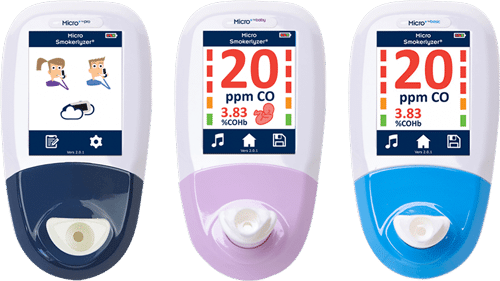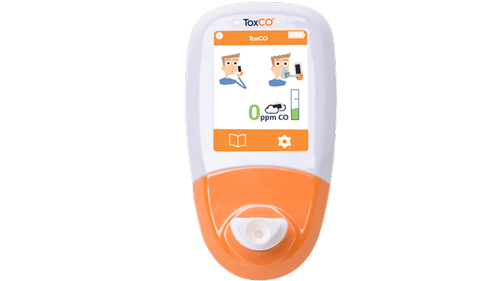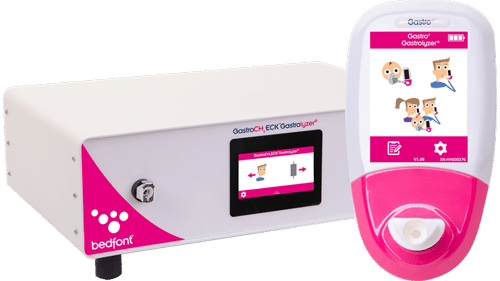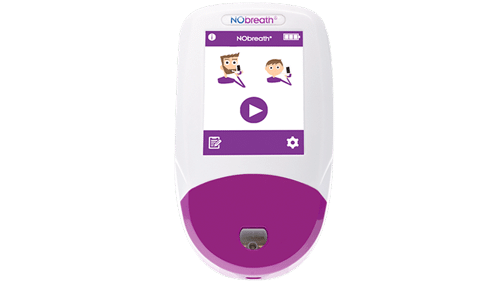
SAVING LIVES
ONE BREATH AT A TIME

The ToxCO®, is a monitor that can accurately determine the level of carbon monoxide (CO) in a person’s blood, through an instant and non-invasive breath test.
The much-anticipated breath monitor is cleared by the FDA for use by healthcare professionals to determine levels of CO poisoning.
Engineered specifically for the fire and emergency medical service industries with the features the necessary to save lives.
Watch Video
Key Features | ToxCO®
Instantly Determine CO Poisoning with 3 Sampling Options

Accountability Features
- Tag Readings - Tag readings with identifiers e.g. badge #, etc.
- Auto-Saves Readings - Automatically saves last 1000 readings with time and data stamp
- Mouthpiece Sampling - Non-invasive breath sample - monitor instantly displays %Carboxyhemoglobin (%COHb) (CO in blood)
- Face mask Sampling - for patients who are unable to follow instructions or unconscious Monitor instantly displays %Carboxyhemoglobin (%COHb) (CO in blood)
- Ambient Mode - Always-on ambient CO monitoring, displayed in ppm



Why ToxCO®
The features that matter and can save lives.

Why a Breath CO test?
Evidence based diagnostic tool that allows you to:
ASSESS | TREAT | TRACK | CONFIRM

Safety
- Never miss a case of CO poisonings
- Instantly safeguard firefighters to see if they should return to duty or not
- Rapidly triage large groups
Instant Results
- The monitor provides instant results shown in %COHb (CO in blood) making interpreting patient’s results quick and easy. No waiting for results from the lab.
Low Cost
- Low cost of approximately $0.15 per breath sample
Simple, Non-laboratory Testing
- Easy to administer test. Breath testing is not regulated under C.L.I.A. as the breath sample is never captured, it is allowed to dissipate.
Non-Invasive & Hygienic
- Works on a breath sample, no bodily fluids
Accurate and Reliable
- Correlation of blood to breath CO spans over 7 decades
- Relied on by hospitals and research institutions for over 40 years

Compliance
- Per NFPA 1584 (2015 edition) 6.2.6.3.2* Members exposed to fire smoke shall be assessed for carbon monoxide poisoning

Reliable Heritage
- Correlation of blood to breath CO spans over 7 decades
Testing Process
Any one can conduct the breath test and it's as simple as 1, 2, 3, 4, 5!
Results appear instantly from a non-invasive breath test.
Why is it important?

Carbon monoxide (CO) is the leading cause of poisoning morbidity and mortality in the United States1. It is responsible for over 430 deaths 2 and over 50,000 emergency room visits3 each year in the US, and many exposures go undiagnosed or misdiagnosed due to the difficulty in confirming carbon monoxide exposure4.
Carbon monoxide is an odorless, tasteless and colorless gas that is formed when organic compounds burn which is why it is known as the “silent killer”. The most common sources of CO are motor vehicle exhaust, smoke from fires, engine fumes, and non-electric heaters. CO poisoning is often associated with malfunctioning or obstructed exhaust systems, suicide attempts and to a lesser extent, the workplace.
Firefighters in particular face long-term health risks due to their occupational exposure to carbon monoxide during the performance of their duties.5 In 2010, U.S. fire departments responded to an estimated 80,100 non-fire CO incidents in which carbon monoxide was found, or an average of nine such calls per hour. The number of incidents increased 96% from 40,900 incidents reported in 2003. This increase is most likely due to the increased use of home CO detectors, which alert people to the presence of CO.6
The Silent Killer
Many homes have an average of 4 – 6 fuel burning appliances that produce carbon monoxide (CO).






The only time CO poisoning likely crosses the minds of most Americans is when it makes the local news, and that’s probably had the unintended consequence of leaving the public with the perception that it’s a rare occurrence. The CDC describes carbon monoxide as the leading cause of unintentional poisoning death in the United States7. If that’s the case, it’s a reasonable assessment that chronic, low level CO poisoning is occurring more frequently than any of us are aware of and is going undiagnosed.
How do we arrive at this conclusion? Consider that CDC’s data accounts for only verified cases of CO poisoning, along with the fact that a common thread in almost all documented cases of CO poisoning incidents is that they’re almost always discovered as an afterthought. Add to that the fact that the general public is not getting tested on a regular basis and it’s extremely reasonable that we’re missing lots of cases. How is it that the leading cause of unintentional poisoning gets missed so often? This is a complex question, but due to its vague symptoms and the general perception that it doesn’t occur that often, the answer is likely due to a lack of consistent, systematic surveillance of CO poisoning. To change this requires regular routine monitoring of the general public, particularly when symptoms are vague and nonspecific.
- Example: One such example is the story of a woman from Shelbyville, Indiana, which made national headlines and was featured on the TV show Inside Edition because her CO poisoning went undiagnosed for 10 years. It all started when she developed extreme fatigue which progressed to the point where she could hardly get out of bed. She underwent blood tests, heart tests, cat scans, spinal taps, EKGs, and MRIs, but the tests came up negative. It wasn’t until she started a home renovation project that her contractors discovered a faulty connection with her HVAC system. As it turns out, she was suffering from low level CO poisoning but the symptoms were never attributed to CO, with even her doctor unable to pinpoint the cause of her illness8. If that sounds surprising, keep in mind that it’s a fairly universal consensus among healthcare experts that most cases of CO poisoning are likely missed due to the fact that CO poisoning is so difficult to diagnose via symptoms. The Mayo Clinic describes it this way: “The warning signs of carbon monoxide poisoning can be subtle. But the condition is a life-threatening medical emergency that requires emergency medical care”.9
Misdiagnosed Symptoms
Signs of carbon monoxide poisoning






Even in extreme cases of CO poisoning, the symptoms can be easily confused with everything from the flu to diabetes.
- Example: As a young woman from Modesto, California learned last year during an evaluation by EMTs.10 It wasn’t until she arrived at the hospital, where a blood test was administered that it was determined that she was suffering from CO poisoning. And the situation didn’t end with her hospitalization. It turns out that the other occupants in that household were also suffering from CO poisoning, but were missed during the initial call. Those individuals were found later, unconscious, thanks to the quick action of the local firefighters and police after they learned of the woman’s test results from the hospital.
Climate Based Misconception


While it’s easy to write these cases off as rare outliers, based on publicly available information, CO poisoning is not being considered in the evaluation of patients as a standard practice in most locations. This is likely a result of the common misconception that CO poisoning mostly occurs in colder climates, where faulty heating systems are chiefly to blame. However, available data actually paints a much different picture.
- Example: According to the Office of the State Fire Marshall (Cal Fire), fire departments in California responded to over 18,000 CO alarm calls in the last two years, with the majority of those calls occurring in warmer Southern California.11 It’s not unreasonable to assume that this scenario is likely playing out all over the country, regardless of climate.
Most Vulnerable Population




The great irony is that the most vulnerable population to CO poisoning are the very people responding to our 911 calls. Firefighters face an out sized threat of exposure to CO because of the work they do, fighting fires. And while it’s tempting to think that fire departments have equipment to protect them, firefighters face chronic exposure from varying levels of CO at critical moments during a fire. Some departments have programs known as firefighter rehab to help monitor firefighters for conditions like this, but the vast majority do not. It’s difficult to pinpoint the exact number of line-of-duty deaths related to CO exposure, but researchers believe there’s a strong correlation between CO and heart disease.
- Example: In a study from 2009, researchers estimated that 45 percent of on-duty firefighter deaths were due to cardiovascular disease and make a compelling argument for a causal connection to CO.12 When one considers the constant, low level chronic exposure to CO through firefighting activity, the evidence they present is persuasive. Why does this matter to the average person? It’s easy to view these public servants through a lens that sees them only as stoic figures in uniform, but at the end of the day, these are husbands, wives, sons, daughters, brothers and sisters. They suffer injury and illness and have health issues just like the rest of us, so caring for their well being, in addition to the general public’s, requires us to think differently about CO poisoning.
Carbon monoxide is referred to as the silent killer because it can’t be seen or smelled.
The ToxCO® will give you the ability to take the guesswork out of identifying cases of CO poisoning and treat CO like a vital sign.
REFERENCES
1. Centers for Disease Control and Prevention. Unintentional non-fire-related carbon monoxide exposures, United States, 2001-2003. MMWR Morb Mortal Wkly Rep. 2005;54:36-39.
2. Morbidity and Mortality Weekly Report (MMWR), Center for Disease Control and Prevention. January 24, 2014 / 63 (03); 65
3. Hampson NB, Weaver LK. Carbon monoxide poisoning: a new incidence for an old disease. Undersea Hyperb Med 2007; 34:163-8
4. Cunnington AJ, Hormbrey P. Breath analysis to detect recent exposure to carbon monoxide. Postgrad Med J 2002;78:233-237.
5. Stewart RD, Stewart S, Stamm W, Seelen R Rapid Estimation of Carboxyhemoglobin Level in Fire Fighters, JAMA Jan 26, 1976-Vol 235, No 4, P390-P392
6. Evarts B. Non-fire Carbon Monoxide Incidents. NFPA Fire Analysis and Research Division Report. March 2012
7. Centers for Disease Control and Prevention. Unintentional non-fire-related carbon monoxide exposures, United States, 2001-2003. MMWR Morb Mortal Wkly Rep. 2005;54:36-39.
8. https://www.insideedition.com/indiana-mom-devastated-mystery-illness-finally-learns-truth-thanks-home-contractors-44002
9. https://www.mayoclinic.org/diseases-conditions/carbon-monoxide/symptoms-causes/syc-20370642
10. https://www.modbee.com/news/local/article213450179.html
11. Office of the State Fire Marshall (Cal Fire), National Fire Incident Reporting System, 2017-2018 CO Incidents Reported by California Fire Departments.
12. https://www.firerescuemagazine.com/articles/print/volume-2/issue-9/firefighter-safety-health/the-perils-of-co.html
Ideal for the following industries
Scientific Literature
If you are interested in receiving supporting data, please contact us and we would be happy to search our archive of over 70+ years of research on breath analysis.
Frequently Asked Questions
What is the ToxCO®?
Is an FDA cleared breath analysis monitor for use by healthcare professionals to determine levels of CO poisoning.
What does the ToxCO® measure?
Non-invasively measures the CO in the blood %Carboxyhemoglobin (%COHb).



























Statistics on Carbon Monoxide (CO) Poisoning